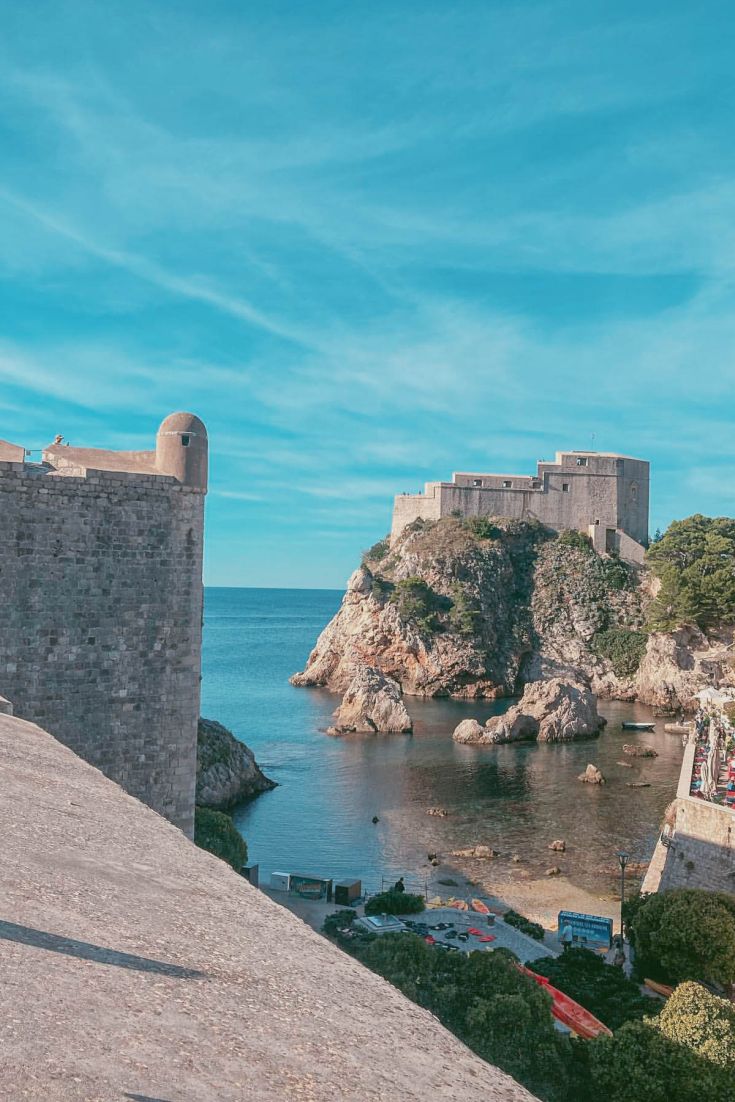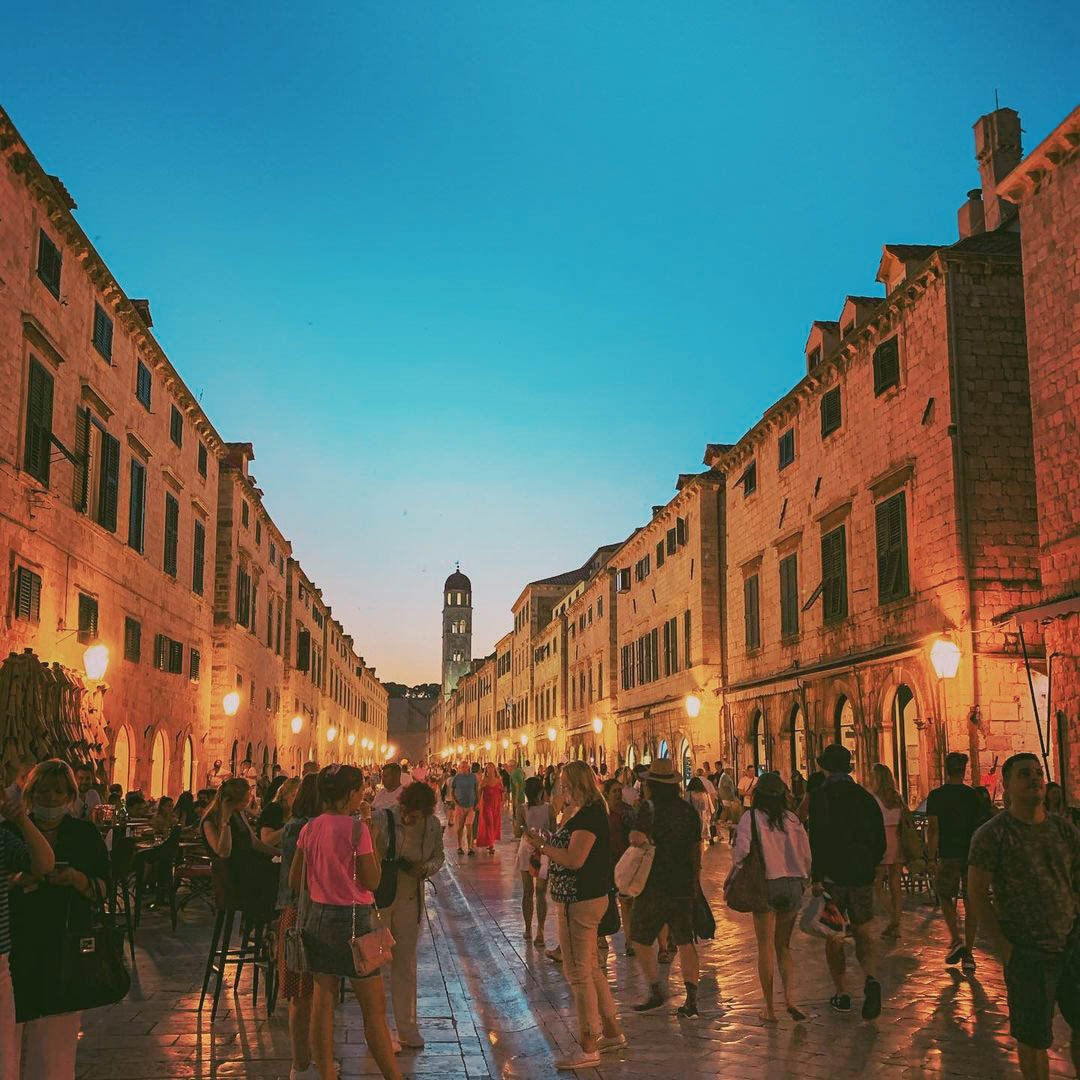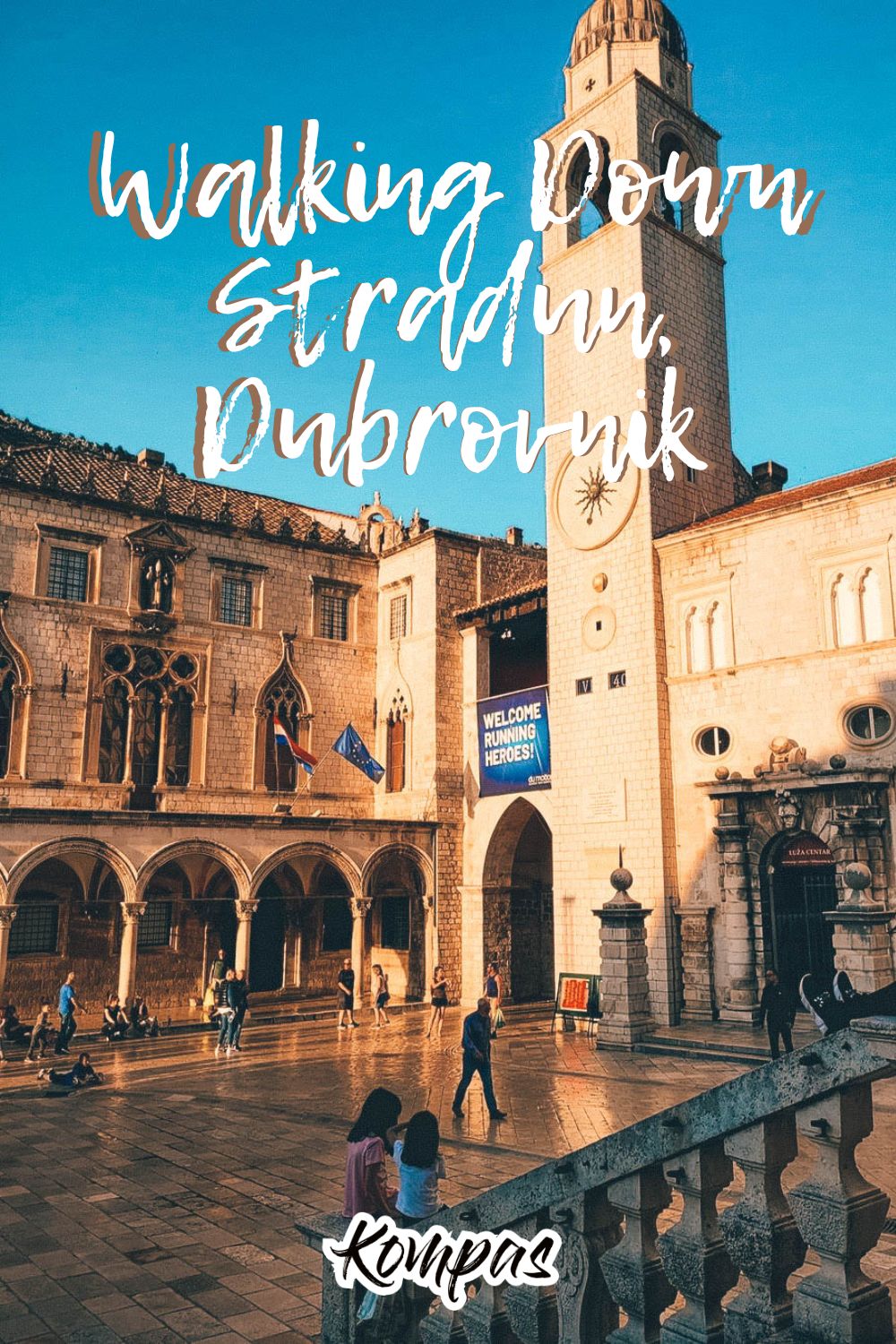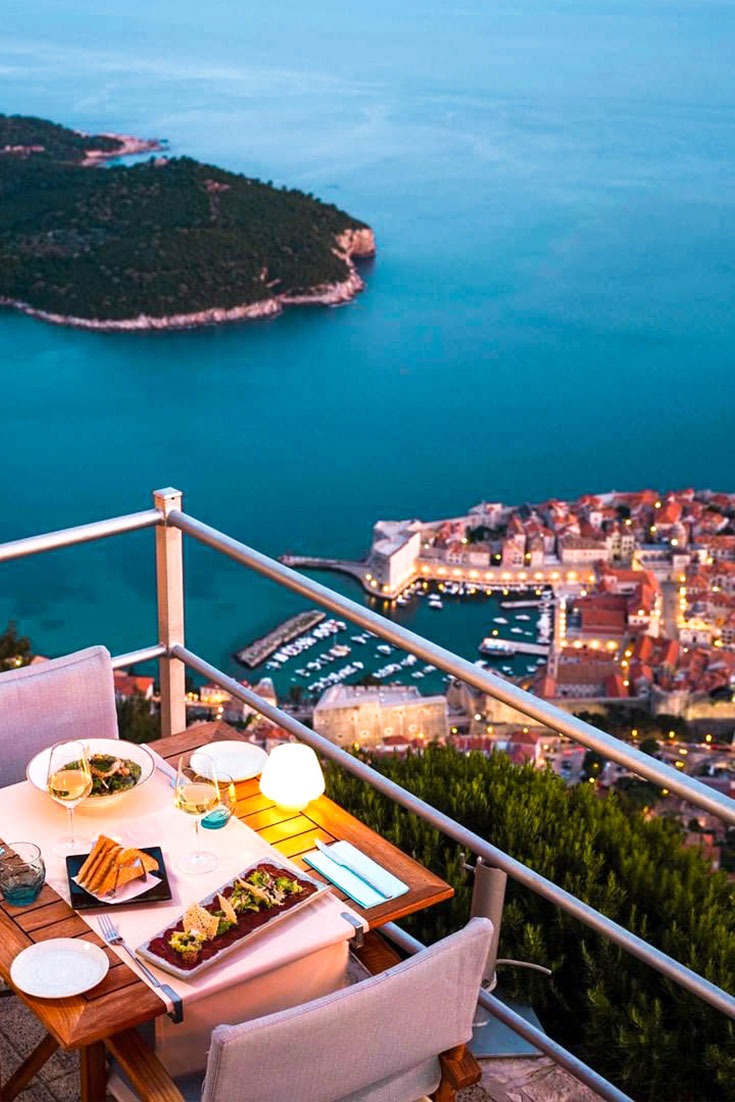Often identified as the quintessential landmark of the city, second only to the City Walls, Stradun occupies a central place in the heart of Dubrovnik's historic Old Town. Stradun is as important to Dubrovnik as La Rambla to Barcelona or Champs-Élysées to Paris.
This blog post will share why you should know about Stradun Street for your next Dubrovnik vacation itinerary.
Exploring the Old Town and Stradun
Stradun is a pedestrian-only avenue in Dubrovnik that has served as the primary local promenade. Located in the city's historic center, it can be easily accessed by following the crowds or consulting a map, as most of the streets in the Old Town converge at Stradun.
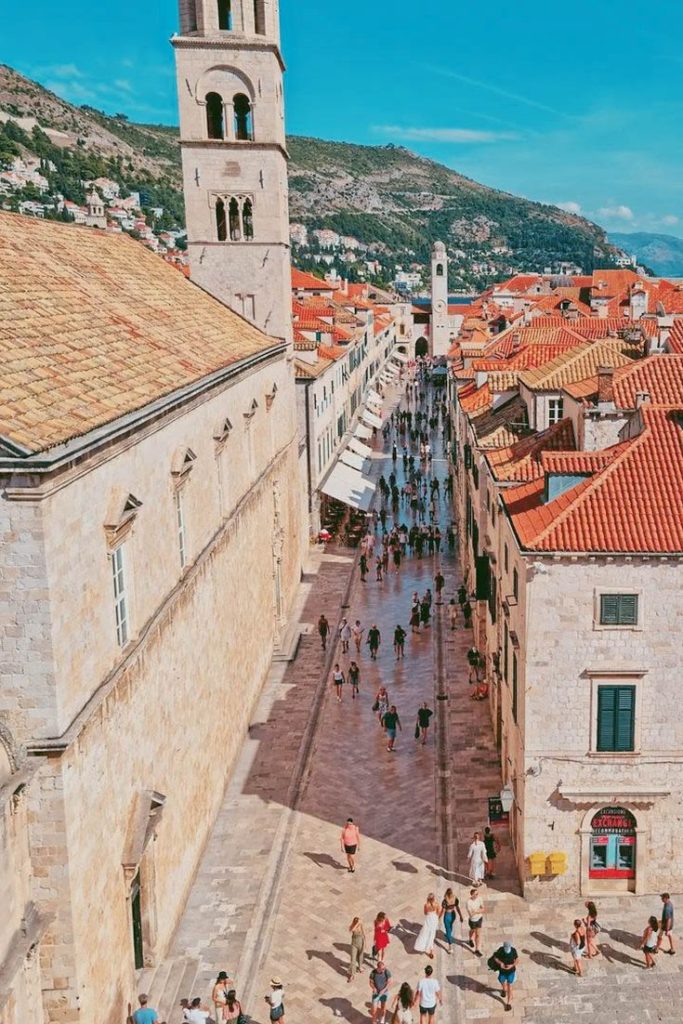
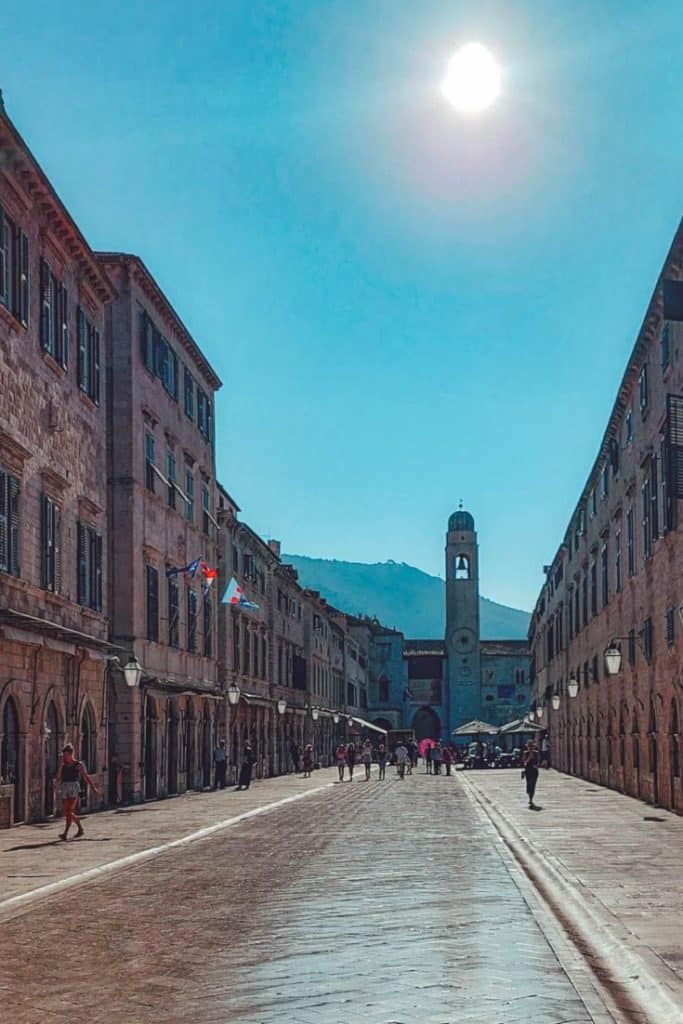
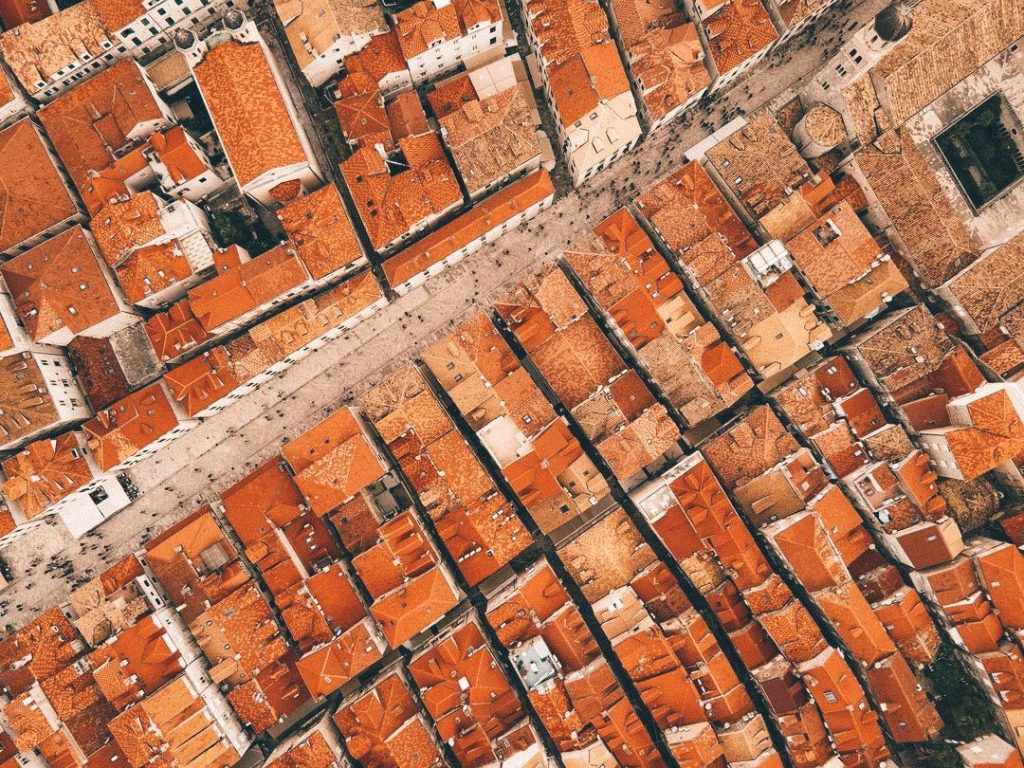
For centuries, it has served as the hub of the city's social, cultural, and economic life, and its limestone streets, lined with 17th-century Baroque buildings, make it one of the most iconic and popular streets in Europe.
Lined with cafes, shops, and restaurants on both sides, this popular thoroughfare is for tourists and locals alike. If you travel to Dubrovnik, it is nearly impossible to avoid Stradun, as it is a central hub of activity and a key attraction in the city.
From the historical sites to the many restaurants, shops, and cafes, this pedestrian-only street is a destination that should not be missed.
Stradun Street History
Stradun is also locally called Placa. Placa, the main street of Dubrovnik Old Town, was formed after the shallow sea that separated the settled island from the mainland was filled in between the 10th and 11th centuries. The spatial layout of the Placa today was determined by construction regulations dating back to 1296.
Interesting: The Venetians named the famous Placa “Stradone or Corso,” roughly translated as Avenue. Placa is 298 metres long. In 1360, it was laid with bricks, and in 1468 and 1901, with limestone in a fish rib pattern.
The main street of Dubrovnik begins and ends with fountains that accentuate the chamber effect of Dubrovnik. Two Onofrio fountains were marked in the layout plan of Dubrovnik as the endpoints of the envisaged church, in which the large fountain with the sixteen stone-carved heads was the main baptistery, and the slender fountain under the Bell Tower was only a container for holy water.
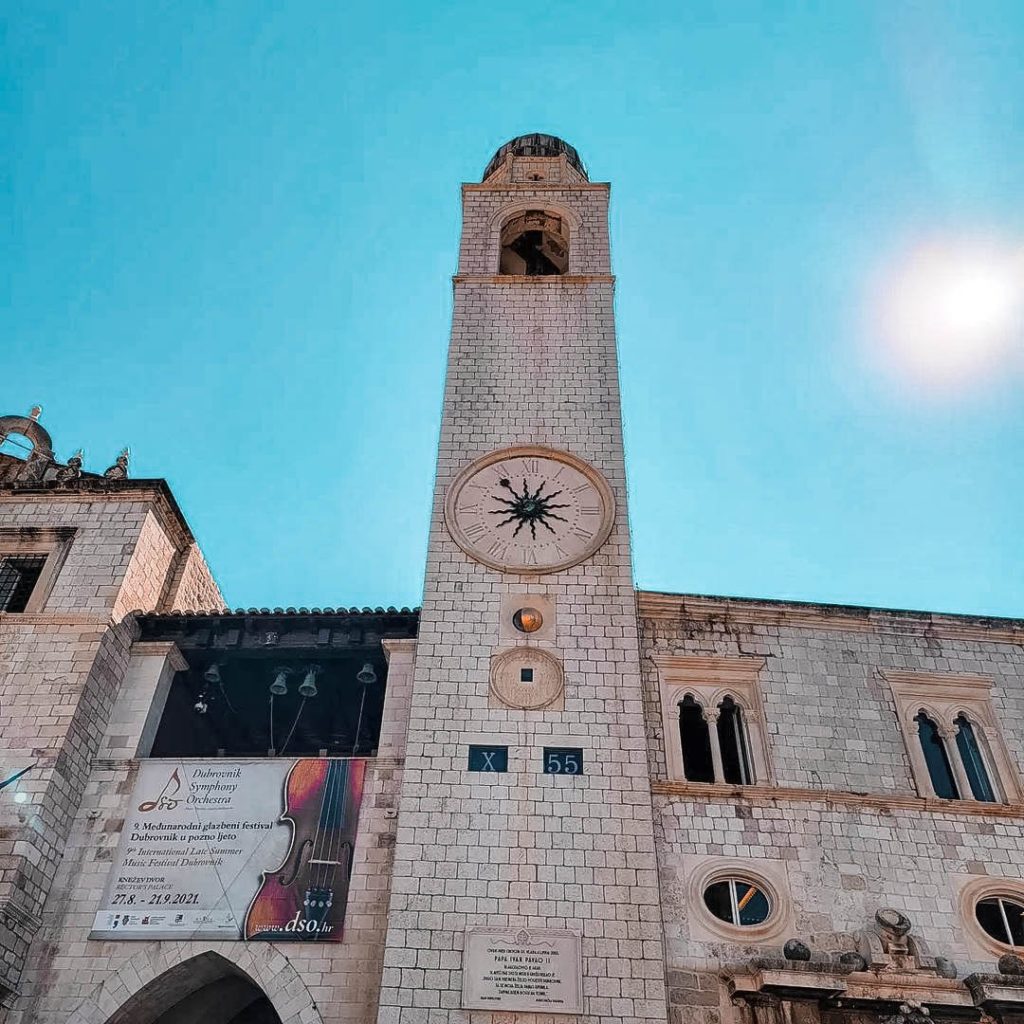
Stradun has a unique history that has shaped its current appearance. In 1667, a devastating earthquake and subsequent fire destroyed much of the city. Before this disaster, the Renaissance-style houses that lined the street were not as uniformly designed as they are today, with many of them featuring architectural ornaments, arcades, and terraces.
Interesting: In response to the earthquake, the Dubrovnik Republic passed a law regulating the construction of residential buildings in the city. As a result, all 17th-century houses that line Stradun has a similar uniformed design.
The ground floor of these houses typically contained a shop with a street entrance featuring a door and window under a semicircular arch. During the day, the door was kept closed, and goods were handed to customers over the sill.
There was also a storage room in the back with a separate alley entrance. The first floor was used as the living area, and the second floor had various rooms, while the kitchen was usually located in the loft above the second floor to prevent fires.
Placa (Stradun) is a favorite gathering and meeting place for the locals and visitors of Dubrovnik, the location for all the most important events, and a place where one can see and be seen. It is not said in vain: “If you haven’t taken a walk across the Stradun, you haven’t been in Dubrovnik!”
Enjoying the views of Stradun Street
Walking down to Stradun from Pile Gate, I couldn't help but be struck by the stunning views and colors surrounding me. This shiny, smooth stone-covered street seemed to give out a sense of history and mystery, and I felt as though somehow I went back in time.
Walking over the smooth stones, they reflect the city's long and storied past. You cannot help but feel a sense of connection to those who have walked these same streets. You can already imagine the footsteps of Dubrovnik merchants and travelers, nobles and commoners, all echoing through the ages as they made their way down Stradun.
Fun Fact: As you probably already know, Game of Thrones was filmed in Dubrovnik. Various locations like Fort Lovrijenac or Pile Bay were extensively used as filming locations.
Since Stradun street is breathtaking with its picturesque stone pathways and architecture, making it the perfect setting for filming Game of Thrones scenes, you would think it would be used a lot for filming scenes.
Not really, though; being the main street in Dubrovnik, it would be costly to shut down all restaurants, cafes, and bars each time the production team needed to film. Despite the challenges, the scenic beauty of Stradun did make it in. It was used for the iconic Walk of Shame scenes with Cersei.
It is lined with grand buildings and shops, and it is a true pleasure to walk down and enjoy the views. The buildings' colors and architecture are truly captivating, and you can spend hours just gazing at the murmur of people and taking in the beauty of the street.
The Baroque buildings at the edge of the street get a certain glow in the sunset sunlight, their golden tones seeming to shimmer and dance in the light.
The views and colors of Stradun are truly spectacularly photogenic and make this a place always to remember. Even at night.
Shopping and dining options
You will find on Stradun mostly souvenir and gelato shops, bars, cafes, and a few restaurants.
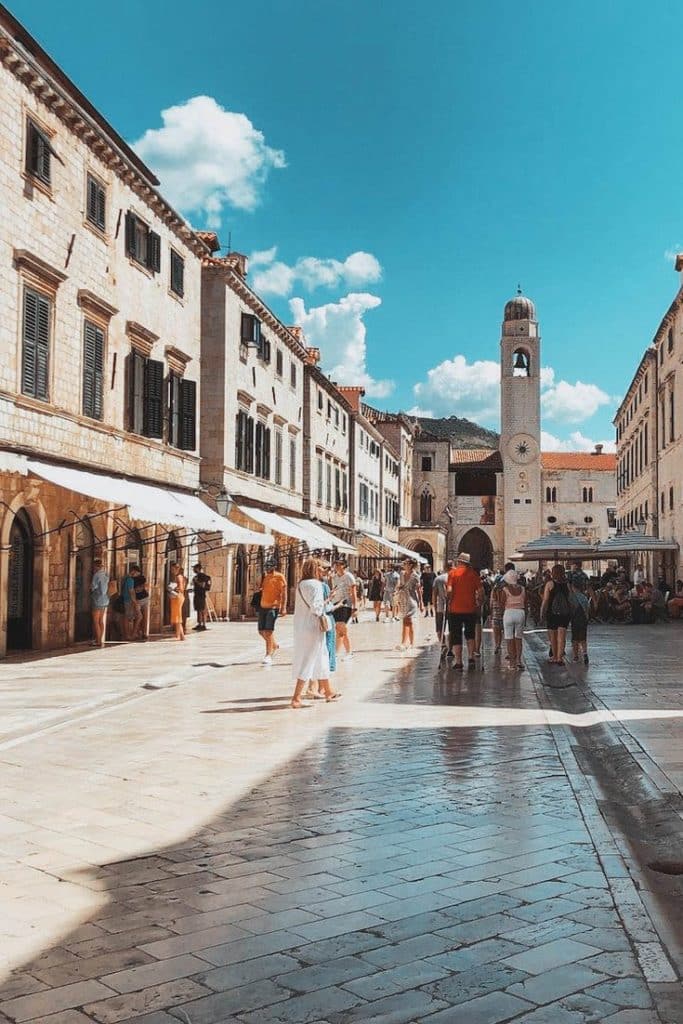
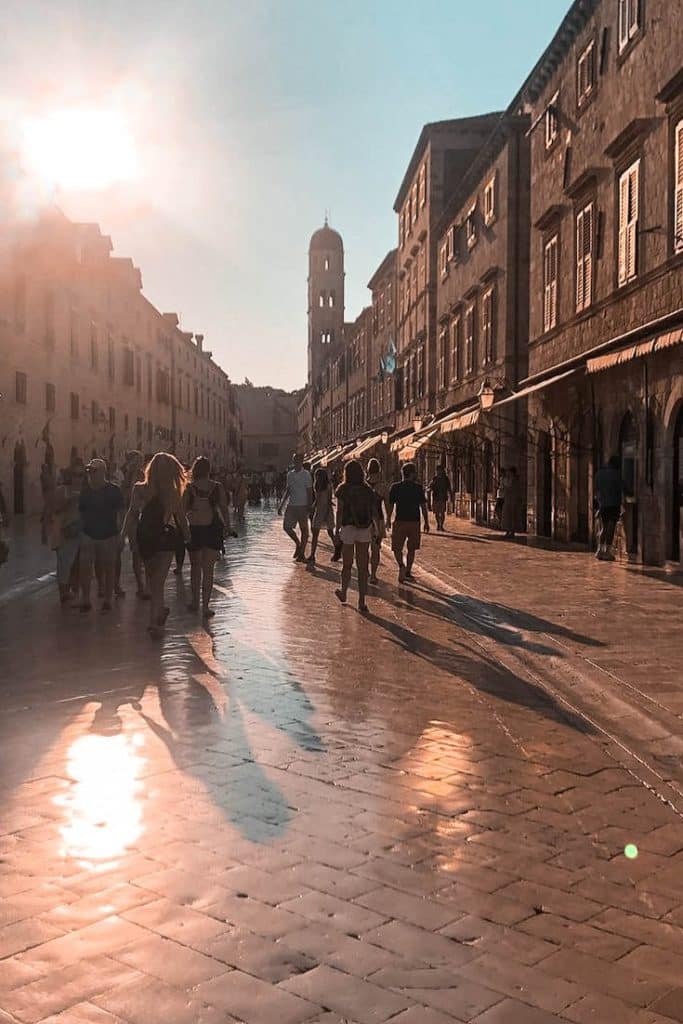
But, as you walk down Stradun, you will be drawn to these little streets that seem to branch off from it like vines. These narrow lanes are filled with charm and character, with little restaurants and shops hidden around every corner.
You can find anything from souvenirs and handmade crafts to designer clothes and local jewelry. Most restaurants in Old Town offer traditional regional dishes (focus on seafood), while few offer a more international menu. Whether you're looking for a casual street food meal or a fancy five-course menu, you'll find something to suit your taste.
Interesting: You will notice that the shops, bars, and other establishments in the old town all seemed to have a uniform look and feel. There were no neon lights or huge advertisements, no aggressive marketing tactics. Instead, everything seemed to be tastefully and discreetly signposted, in keeping with the traditional atmosphere of the city.
Clearly, the local authorities had taken great care to preserve the historic character of Dubrovnik, introducing regulations that required merchants to keep their signage and branding low-key and respectful of the city's cultural heritage. It was a refreshing change from the bustling, commercialized streets of many other cities, and I couldn't help but feel a sense of calm and peacefulness as I wandered the winding lanes of the old town.
Admiring the historical monuments and buildings
As you make your way towards the Placa from the Pile Gate, you will first notice the large steps of one of the main entrances to the city walls on your left. The beautiful Renaissance church of the Holy Savior is next to the entrance, the only church that survived the 1667 earthquake.
And on your right side will be Large Onofrio’s Fountain, a splendid circular springwater fountain built in 1438 and decorated with ornate, carved-stone masks called maskerons. It was named after its architect Onofrio de la Cava of Naples.
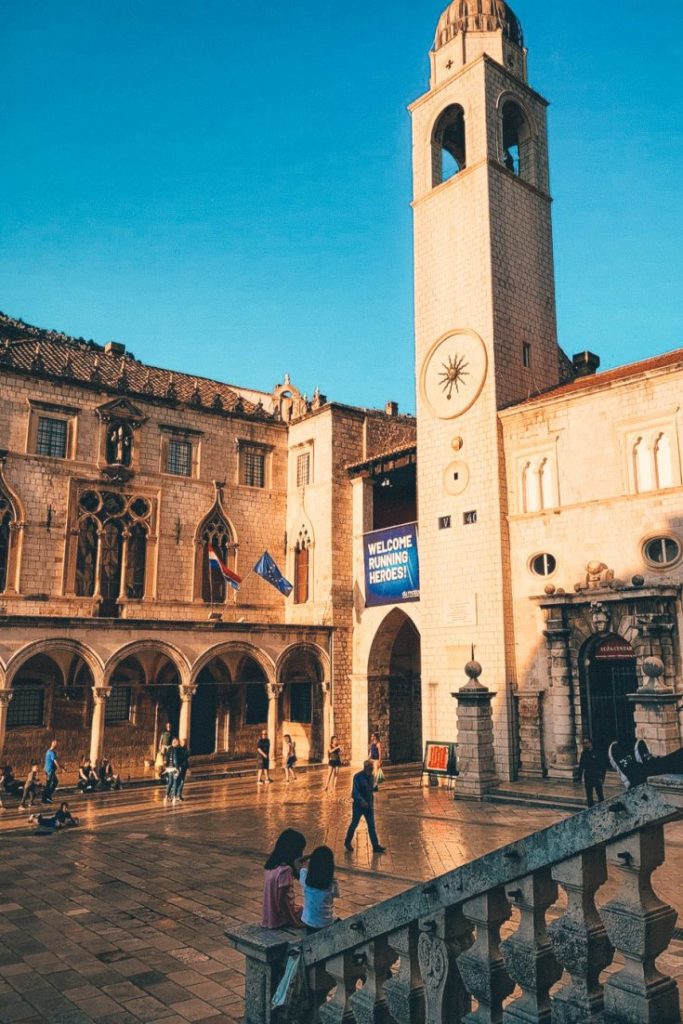
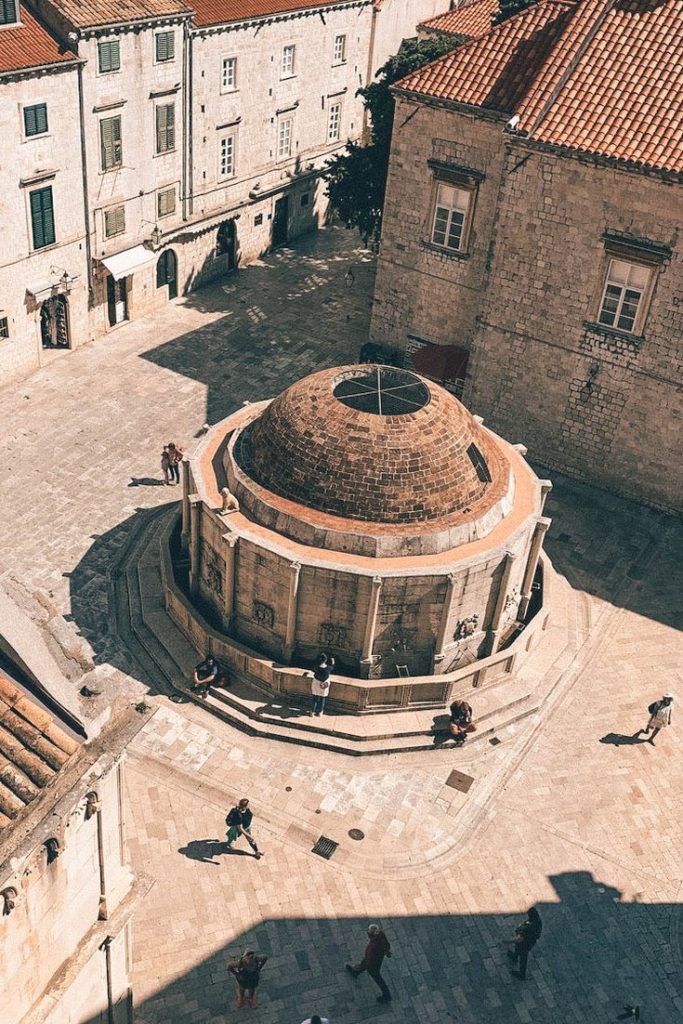
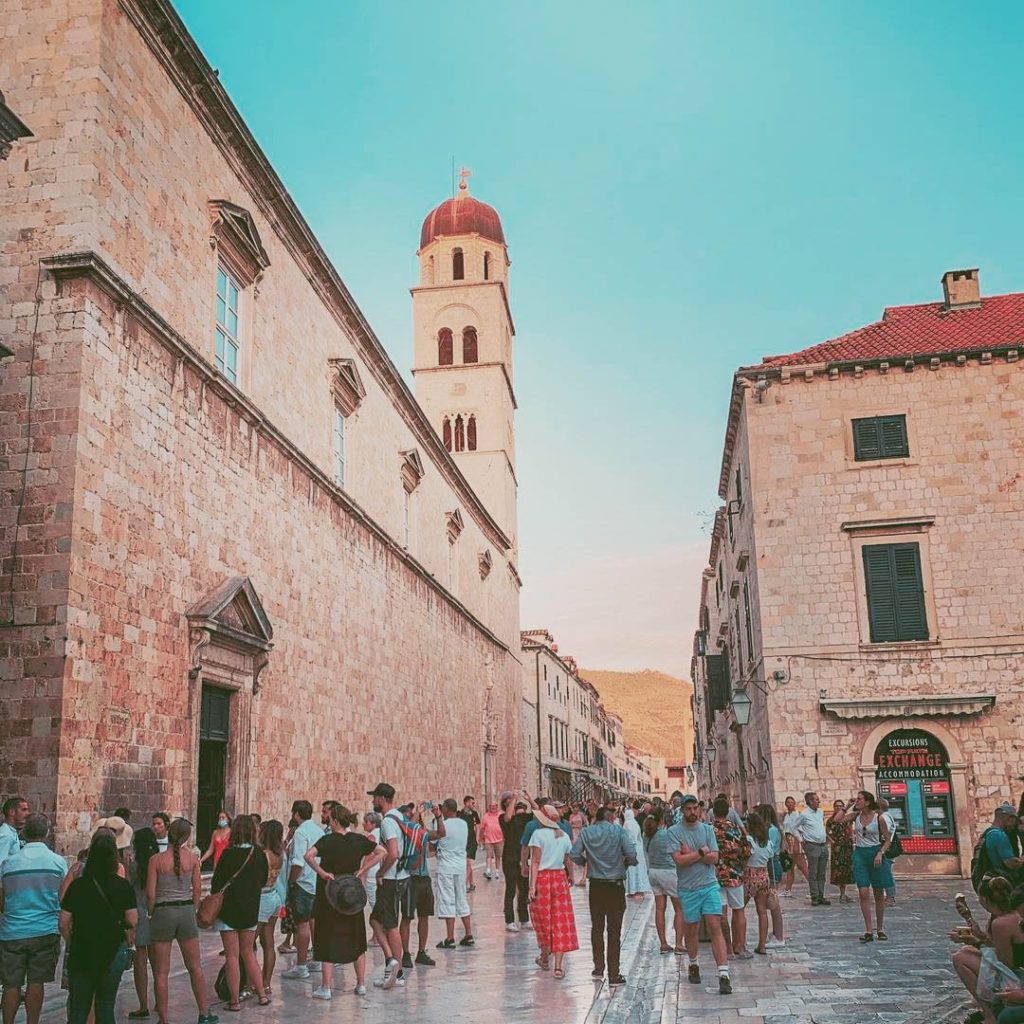
Take your time strolling down the street towards the other end and admire the details of the Baroque or Gothic houses and 14th-century Franciscan Monastery, and you’ll be sure to gain an appreciation of how great this city once was.
On the other end of Stradun are the Luža square and the Onofrio Small Fountain, designed by the same engineer but carved by the sculptor Pietro di Martino. Right at the front of the square stands the famous Church of Saint Blaise, the patron saint of Dubrovnik.
There are other significant buildings in Luža Square, namely Sponza, a 16th-century palace. And at the center of the square, you will find one of the prominent symbols of Dubrovnik's freedom and independence - Orlando's Column.
Getting there
Getting to Stradun is as easy as ABC. It's located right in the heart of the Old Town and can easily be reached by foot from any part of Dubrovnik pretty fast since it’s so small. There's also a local bus system that can take you to Old Town from pretty much anywhere in the city.
Tips: If you're planning a visit to Old Town and Stradun, check the cruise liner schedule for that day. On days when these enormous ships are docked, the streets can become incredibly crowded, and the tourist experience may not be as enjoyable. To truly savor the beauty and history of Dubrovnik, it's best to avoid days the cruise ship crowds are in town.
That being said, do take some time to explore the narrow side streets of the city. Not only will you find a welcome respite from the hustle and bustle of the Stradun, but you'll also discover that the food and drink in these quiet corners are often considerably cheaper than what you'll find in the more touristy areas.
No trip to Dubrovnik would be complete without a stroll through Stradun Street. The street is a living museum and a great place to people-watch and do souvenir shopping. So grab a coffee, take a leisurely walk, sit on the steps of Saint Blaise church and soak in the atmosphere of this fascinating street.
